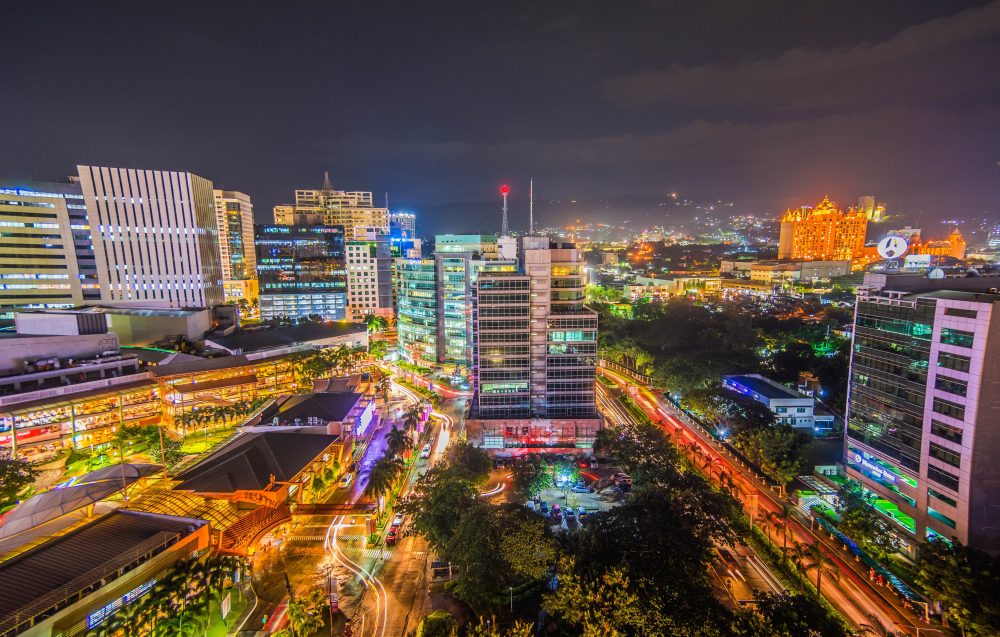8 Places You’ll Want to Visit in Cebu City
Cebu City is the busy and energetic port capital of Cebu Province. Founded in the 16th century it’s one of the Philippines’ oldest and now its fifth biggest metropolis. Fronting Cebu Strait and surrounded by lofty green mountains, the city offers many sightseeing opportunities. At its center are a multitude of modern structures littered with centuries-old churches, houses, and monuments. Combined, this architectural mix reflects the best of the Philippines’ past and present. If Cebu City is your next stop, here’s a rundown of its top attractions.

Santo Niño Basilica
Santo Niño Basilica holds a special place in history as it’s the first Catholic church established in the country. Standing prominently at the center of a busy district the church is often flooded with churchgoers and tourists. A walk inside reveals inspiring religious artworks and statues of different saints, the centerpiece is the revered image of Santo Niño de Cebú to whom the church is dedicated to.
Magellan’s Cross
Across Santo Niño Basilica in the middle of a bustling plaza you’ll find Magellan’s Cross, a wooden crucifix inside a small pavilion said to have been planted by Spanish explorers led by legendary conquistador Ferdinand Magellan in 1521. Although, rather unremarkable in appearance the cross is an important relic as it represents the introduction of Christianity and the beginning of the Spanish regime.
Yap-Sandiego Ancestral House
The Yap-Sandiego Ancestral House is a remarkably well-preserved, molave house that tells the story of 17th century Philippine aristocracy. Once the home of a prominent family, Don Juan Yap, his wife Doña Maria Florido, and their three children, it’s now a celebrated historical landmark. Within its chambers are hundred-year-old furniture, artwork, cutlery, pottery, even tabletop games that altogether give visitors a vivid glimpse at the lives of the rich and famous of those times. The house is open to visitors daily.
Cebu Heritage Monument
Across the street from the Yap-Sandiego house stands the Cebu Heritage monument. Built in the year 2000, the monument commemorates significant events in Cebu’s history in beautifully crafted, life-size metal sculptures. Famous people that appear in the monument include: Pedro Calungsod, a Catholic saint who suffered religious persecution in 1672; Lapu Lapu, a native war hero; and Ferdinand Magellan, the Portuguese conquistador defeated and killed by Lapu Lapu in 1521.
Fort San Pedro
Fort San Pedro is a grand military fortress that reminds us of the growing Spanish empire 300 years ago. The fortress was pivotal in both the rise and fall of the Spanish regime. It was built in 1565 at the command of Miguel Lopez de Legazpi, the first gobernadorcillo of the Philippines and, when Spanish rule ended in 1898, control of the fort was passed on to Philippine revolutionaries. At present, it is a protected historical landmark maintained by the city government.
Sirao Flower Garden
Cebu’s mountainous district is a great escape from downtown Cebu and one of the well-loved attractions here is Sirao flower garden. Built on a hillside in the upland village of Sirao, the flower farm showcases a variety of beautiful local flowers including, celosias, pyramidals, purple lilies and more. Its colorful rows of blossoms set against a backdrop of mountains is really spectacular. Sirao flower garden was patterned after the famous flower fields of Amsterdam and is open to visitors daily.
Cebu’s mountainous district is a great escape from downtown Cebu and one of the well-loved attractions here is Sirao flower garden. Built on a hillside in the upland village of Sirao, the flower farm showcases a variety of beautiful local flowers including, celosias, pyramidals, purple lilies and more. Its colorful rows of blossoms set against a backdrop of mountains is really spectacular. Sirao flower garden was patterned after the famous flower fields of Amsterdam and is open to visitors daily.
Taoist Temple
Standing majestically on a mountaintop is another upland highlight, the Taoist Temple. Here visitors get an intimate look at another dimensione of Cebu’s spirituality in its Taoist following. Taoism is a religion founded on the teachings of the ancient Chinese philosopher, Lao Zi. Built in 1972, Cebu’s temple was designed after traditional temples in China which are filled with statues of deities, dragons, and other symbolic art that express various aspects of Chinese culture and history. Oneness with nature is a key principle in Taoism and this explains why many Taoist temples are built in mountains and forests.
Temple of Leah
The Temple of Leah is a sprawling and intricately designed memorial built by Teodorico Soriano Adarna, a hotel and resorts tycoon. The structure is a tribute to his late wife, Leah Albino-Adarna whose golden statue is the centerpiece of the site. Inspired by Corinthian architecture the structure is decorated with various statues of angels, Grecian-like gods, maidens with garlands, and even mythological creatures. Built in the upland village of Busay, the memorial covers a land area of more than 5,000 square meters and offers fantastic views of downtown Cebu and surrounds.
Cebu Metropolitan Cathedral
Dating back to 1565 the Metropolitan Cathedral is another enduring sanctuary. On the outside, its architecture is typical of Spanish colonial churches with thick stone walls decorated with ornate symbolic art, arched doorways, and a belfry with a prominent dome. Whereas, on the inside, the church has a more twenty-first-century feel with marbled floors, modern lighting, and a sparkling golden altar, this is because its interior was severely damaged during World War 2 and much of it had been rebuilt after the war.
Sky Observatory
If you’ve had your fill of historical churches and grandiose temples, take a stroll around Osmena Circle for a taste of Cebu City’s more modern delights. In this area, you’ll find the Sky Observatory, an open air viewing deck on the top floor of Crown Regency Hotel. Here you can enjoy scenic views of the city from its harbour front to its farthest outskirts. And for a more extreme experience, brave the heights and try some of the amenities offered like the zipline that takes you across the hotels’ two towers or the 32-feet climbing wall.
From its days as a Spanish colonial stronghold to an energetic and cosmopolitan metropolis today, Cebu City has become a favorite stop in South East Asia and as it has in the past, it will surely continue to attract waves of visitors from far and wide.
Check out these Travel Guides for more info on the coolest beaches to visit in the Philippines.
If you found this article useful, please give it a thumbs up

 ">
">
